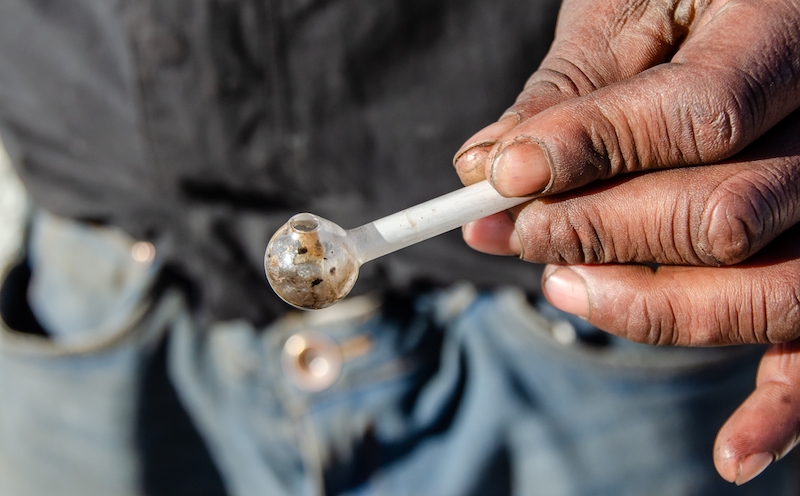Plus: Naloxone barriers for the uninsured, and alcohol’s links to cancer
By Mark Mravic
While fentanyl rightly has become a focus of attention for the surge in opioid overdoses and deaths, the grip of an older nemesis—methamphetamine—on rural America shouldn’t be overlooked. That’s the takeaway from a study that analyzed drug use in rural communities in 10 states.
Also this week, how cost continues to be a barrier to naloxone access even as efforts grow to widen its availability, and a look at alcohol’s role in cancer worldwide.
From the JAMA Network:
Meth Helps Drive the Rural Overdose Epidemic

Opioids get the headlines, but methamphetamine still plagues rural communities. In a survey of more than 3,000 regular drug users enrolled in the Rural Opioid Initiative across 10 states, researchers from the Oregon Health & Science University (OHSU) and elsewhere found that four in five reported using methamphetamine in the past 30 days. And co-use of meth with opioids was particularly notable, with 22% of those in the study who used both drugs reporting having had an overdose in the past six months. That compares to 14% who reported an overdose using opioids alone, and 6% for meth by itself. Said OHSU’s P. Todd Korthuis, MD, MPH, lead author of the study, in a release, “Co-use of methamphetamine and opioids is associated with a big increased risk of overdose in rural communities.”
The scarcity of treatment options in most rural communities only makes the problem worse; 44% of co-users of meth and opioids said they’d sought treatment for their substance use but were unable to access it. The study’s authors write: “Our results document pervasive co-use of methamphetamine and opioids associated with nonfatal overdose among people who use drugs in rural communities, with profound implications for harm reduction and treatment services. Study findings highlight the urgent need for interventions that address both opioids and methamphetamine and are tailored to the needs of rural communities.”
From the JAMA Network:
Out-of-Pocket Naloxone Costs Are a Barrier for the Uninsured
The opioid-reversal drug naloxone is one of the pillars of harm reduction for opioid use disorder (OUD), and making it easier to get is a critical step in addressing the overdose epidemic. But a new study from the RAND Corporation found that cost may be a significant barrier to access for some of the very people who are most in need. Researchers from RAND and the University of Southern California examined more than 700,000 prescription records for naloxone from 2010 to 2018. Looking particularly at costs, they found a wide and troubling gap based on insurance status. For insured people, out-of-pocket costs for naloxone dropped 26% from 2014 to 2018, but the uninsured saw a more than five-fold increase in out-of-pocket expenses for the drug over the same period. The rise was particularly acute for the brand Evzio, but the insured-versus-uninsured discrepancy was still significant for both Narcan and generic naloxone. In 2018, the mean out-of-pocket cost for Narcan was $13.48 for an insured patient and $73.62 for someone without insurance.
“Policymakers who want to further expand access to naloxone—particularly among the uninsured and vulnerable—need to pay greater attention to the out of-pocket costs.”
—Evan Peet, RAND Corporation
The landscape has changed somewhat since 2018, the endpoint of the study’s data. Every state now has laws or arrangements for people to obtain naloxone without a prescription, and the number of harm reduction programs, both government-run and grassroots, that offer free or low-cost naloxone is growing. But barriers remain, and for those without insurance who go to a pharmacy, the cost can be prohibitive. Drugs.com, for instance, lists the retail price for a two-dose order of generic naloxone nasal spray at around $120.
The authors write: “This study provides evidence that the price of naloxone is almost certainly an impediment to more widespread adoption among uninsured patients, a vulnerable and critical population representing approximately 20% of adults with opioid use disorder and 30% of opioid overdose deaths.” Lead author Evan Peet, PhD, said: “Policymakers who want to further expand access to naloxone—particularly among the uninsured and vulnerable—need to pay greater attention to the out of-pocket costs.”
From The Lancet:
Alcohol Is the Second Leading Avoidable Cause of Cancer
When we think of the ills of problem alcohol use, the social impact might be what comes to mind first—stresses on family relationships and friendships, job instability, loss of community standing and the like. But the physiological consequences are just as serious, a fact emphasized by a study published this week in The Lancet that found that, worldwide, alcohol use was the second-leading risk factor—behind only tobacco—for cancer deaths for which a cause can be attributed.
“Most attributable [cancers] were accounted for by behavioural risk factors … suggesting a need for concerted efforts to address behavioural risk factors to effectively reduce cancer burden globally.”
—Lancet study
Examining a vast array of data from around the world, the researchers looked at 34 known cancer risk factors—including tobacco and alcohol use, high body-mass index, dietary issues, air pollution, occupational exposures and more. They found that in 2019, out of some 10.1 million cancer deaths globally, about 4.45 million could be attributed to one of these risk factors. Tobacco use was far and away the biggest contributor, accounting for some 26% of all cancer deaths. Alcohol was second, at around 4.9%—though there were notable disparities between men and women. For men, alcohol accounted for 6.9% of total cancer deaths, followed by dietary risks, air pollution and high body-mass index. For women, however, alcohol was just the seventh-leading attributable factor in cancer deaths, at 2.3%; women’s top risk factors after tobacco were “unsafe sex,” followed by dietary risks, high body-mass index and high fasting blood glucose. The types of cancer for which alcohol was a cause also differed between the sexes; in women it was predominantly a factor in breast cancer; for men, common alcohol-related cancers included those of the liver, colon and esophagus.
“Most attributable [cancers],” the authors note, “were accounted for by behavioural risk factors, such as tobacco use, alcohol use, unsafe sex, and dietary risks, suggesting a need for concerted efforts to address behavioural risk factors to effectively reduce cancer burden globally.”
Top photo: Timothy Eberly













